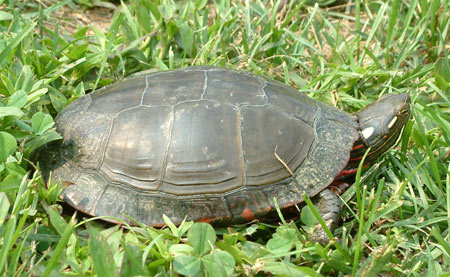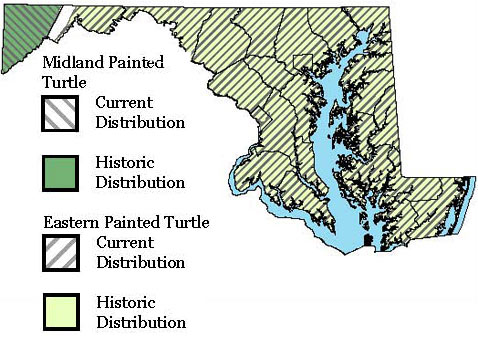Field Guide to Maryland's Turtles (Order Testudines)
Main_Content
Midland Painted Turtle (Chrysemys picta marginata) | | Common Name:
|

Midland Painted Turtle Photo Courtesy of Linh Phu
|
Size: 4½ - 7 inches. Record - 9½ inches |
Appearance:The Midland Painted and the Eastern Painted are two subspecies of Painted Turtle. They share a similar appearance.
- Black head with bright yellow elongated spots on either side behind the eyes
- Yellow borders along the outer margin of the carapace (top shell) and red spots
- Bars or crescents underneath the outer edge
- The carapace is smooth, flattened and olive to black
Differences between The Midland Painted and the Eastern Painted:
- In the Midland Painted Turtle, the large scutes on the back will not line up; they typically alternate.
- The plastron of the Midland may also have gray shadows or blotches along the center where the Eastern Painted has a solid yellow to orange belly.
|
Habitats:All painted turtles prefer shallow, slow-moving water with a soft bottom and aquatic vegetation. They can be found in both fresh and brackish water.
|
How to Find:The most conspicuous basking turtle we have, they can be active in any month, but typically observed basking April to September. Observe them through binoculars on fallen logs and debris along shorelines, typically in early morning, midday and early afternoon. Also, find them on land nesting in loose soil from late May to early July.
|
Distribution in Maryland:Painted turtles are found throughout Maryland. Midland Painted Turtles will be found in the northern and western counties and may breed with Eastern Painteds where they overlap in Central Maryland.

|
|
